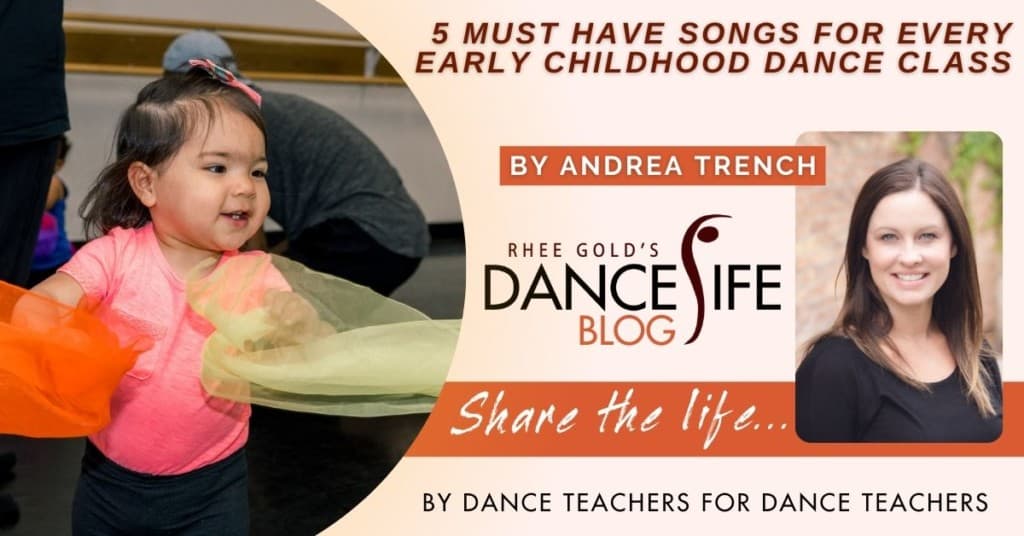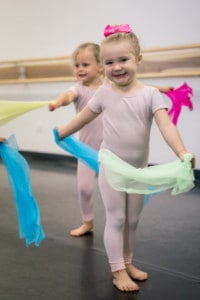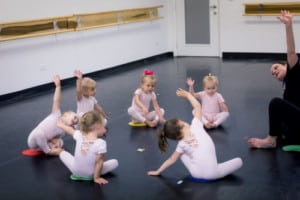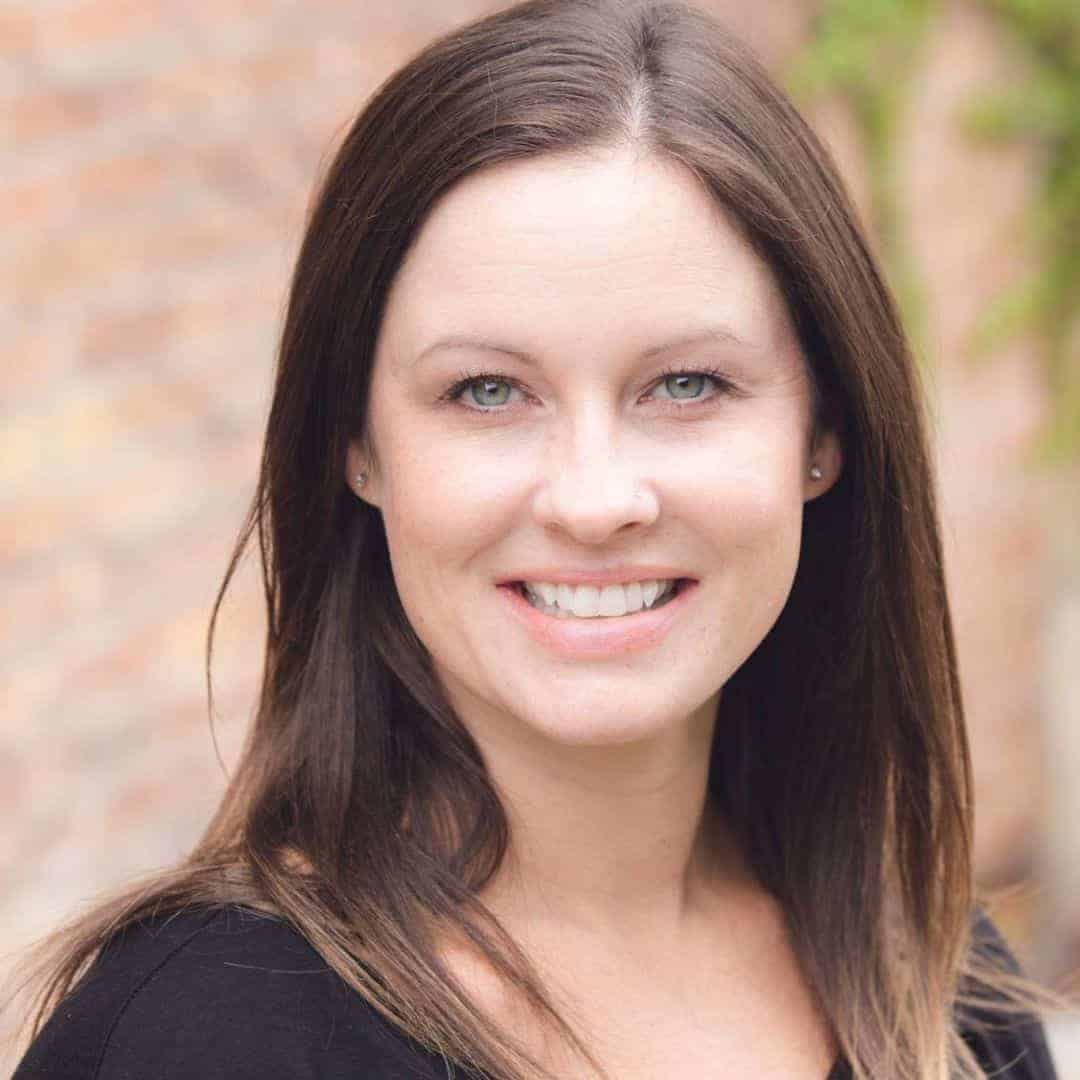5 Must Have Songs for Every Early Childhood Dance Class

The music you choose for your early childhood dance classes is no light decision. Your selections are crucial for successful class engagement, excitement, and education. Today I am sharing five songs that should be included on every early childhood dance playlist.
1. Freeze Dance Songs- The freeze dance isn’t just a fun activity for the end of class or as a reward for good behavior. Oh, no friends. The freeze dance should be a staple in every class and I recommend it be the first activity you do in every class. Not only does the freeze dance allow for creative expression and improved improvisational skills, but it is an excellent listening and self-regulation activity. These are two things we need our students to develop in order to create an optimal learning environment.
When choosing freeze dance songs be sure to pick a song that stops on its own. This will allow you to fully participate and demonstrate how to do the freeze dance. When your dancers see you hopping and skipping and turning, they are more likely to mimic your movement, remain engaged, and dance rather than just run. If you teach conceptually, there are many songs that explore the concepts, which is an added bonus to enrich your learning environment. My favorites are “Self-Control” by David Kisor for the concept of speed and “Freeze Out” by Captain Music for the concept of weight. You can find over 70 freeze dance songs on the DiscoverDance Spotify page.
2. Ritual Songs- Having an activity that you repeat every week for the entire season creates community, comfort, and confidence in your little ones. I recommend you choose a hello and goodbye song and stick with it for the entire year. You will find this is the song they sing the loudest... eventually. The younger the students, the longer it will take for them to start participating. But, keep at it and you will soon see them light up during this portion of class every week.
3. Live Singing Piggyback Songs- A piggyback song uses a familiar tune such as a nursery rhyme but replaces the lyrics. You can replace the lyrics with transitional cues when moving from one activity to the next. For example (to the tune “Are You Sleeping”), “Make a circle. Make a circle. Big and round. Big and round. Everybody say hello. Everybody say hello. Now sit down. Now sit down.” The singing catches their attention, but the lyrics tell them what to do.
You can also use piggyback songs for concept explorations. When exploring the concept of pathways (to the tune of “She’ll Be Coming Around the Mountain”) sing, “We are moving a straight pathway through the space. We are moving a straight pathway through the space. We are moving a straight pathway. We are moving a straight pathway. We are moving a straight pathway through the space.”
And lastly, you can use piggyback songs to teach terminology. To the tune of “The Farmer in the Dell”, we teach adagio and allegro by tiptoeing in a circle singing “We’re moving small and slow. We’re moving small and slow. This is the way we go in adagio. We’re moving small and fast. We’re moving small and fast. This is the way we go in allegro.”
4. Directive Songs- Directive music is powerful. When the music guides the dancers through an activity, teachers are then able to demonstrate proper listening skills and movement execution. We model what the student should look like and allow the music to teach. This is especially important for our visual learners. Children learn through imitation. If we are always talking and giving corrections, our students are not seeing how they are supposed to participate in class. They are only seeing how we, as their teachers, talk... a lot. Turn on directive music, zip your lips, dance your heart out, and see what happens. Some of my favorite directive songs are “Action Dance” by Kate Kuper, “Shake your Hands” by Jen Gould, and “Tap Your Sticks” by Hap Palmer. Using directive songs during instrument exploration is particularly helpful since you aren’t straining your voice over the music and all of the instruments.
5. Concept Reinforcement- As a conceptual dance educator, there is not a moment that goes by in my classes when I am not emphasizing the concept of the day. In the freeze dance, hello song, terminology piggyback songs, directive songs, goodbye song, and everything in between… including the times when we have background music on, even then, I am choosing my music with clear intent. If we are exploring the concept of size, you will hear “Twinkle, Twinkle, Little Star”. If we are exploring the concept of relationships, you will hear “My Bonnie Lies Over the Ocean”. If we are exploring the concept of speed you will hear, “I Had a Little Turtle”. My entire lesson plan focuses on that concept of the day. That creates an enriched learning environment where I have a clear objective and meaningful purpose.
These are the five must have songs for every early childhood dance class. I hope this has inspired you to review your own playlists and make intentional music selections to enrich your class and create a more meaningful dance experience.
Andrea Trench is dedicated to helping dance teachers create and deliver content that is research-based and developmentally appropriate for children under the age of 6. Her primary focus is classroom management, conceptual teaching, and foundational movement skill development in early childhood dance education. In addition, Andrea uses her 12 years of experience as a partner in a dance studio to inspire, equip, and empower educators.








